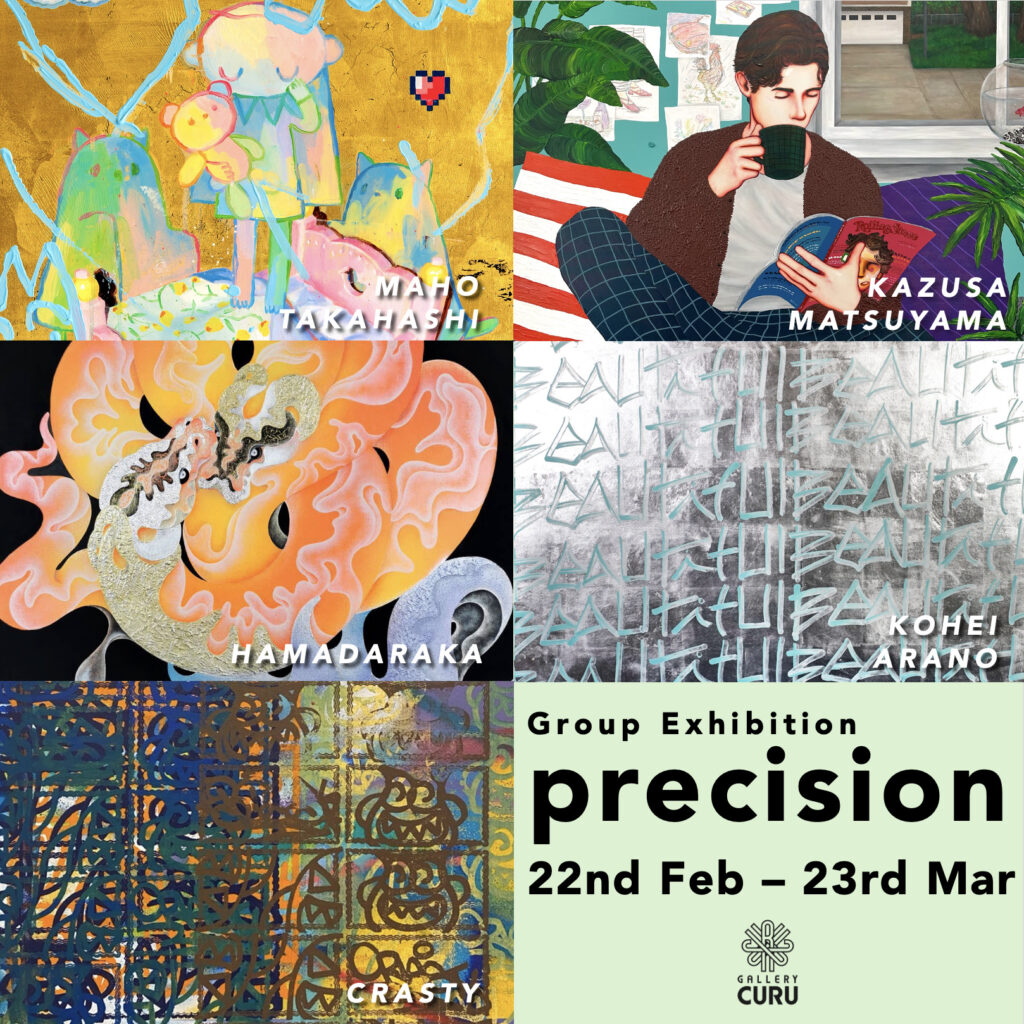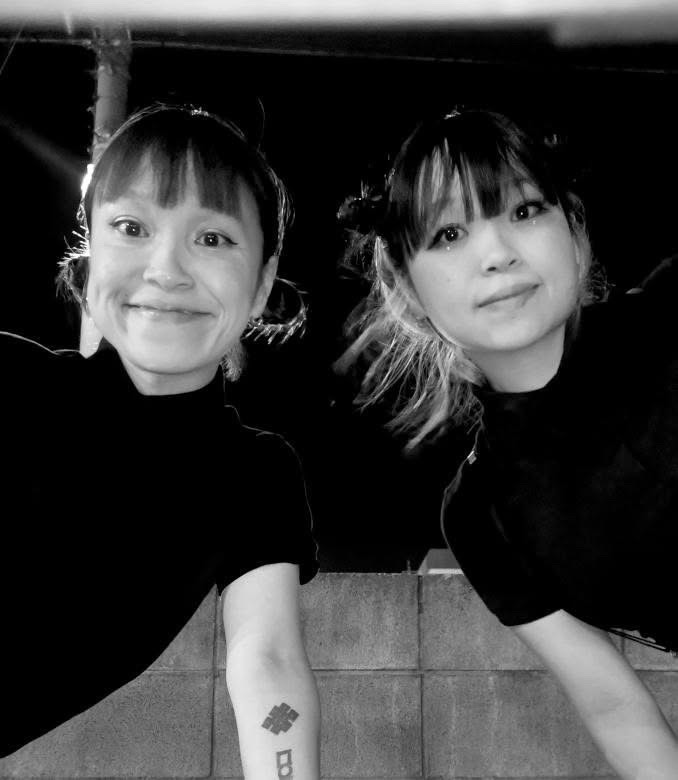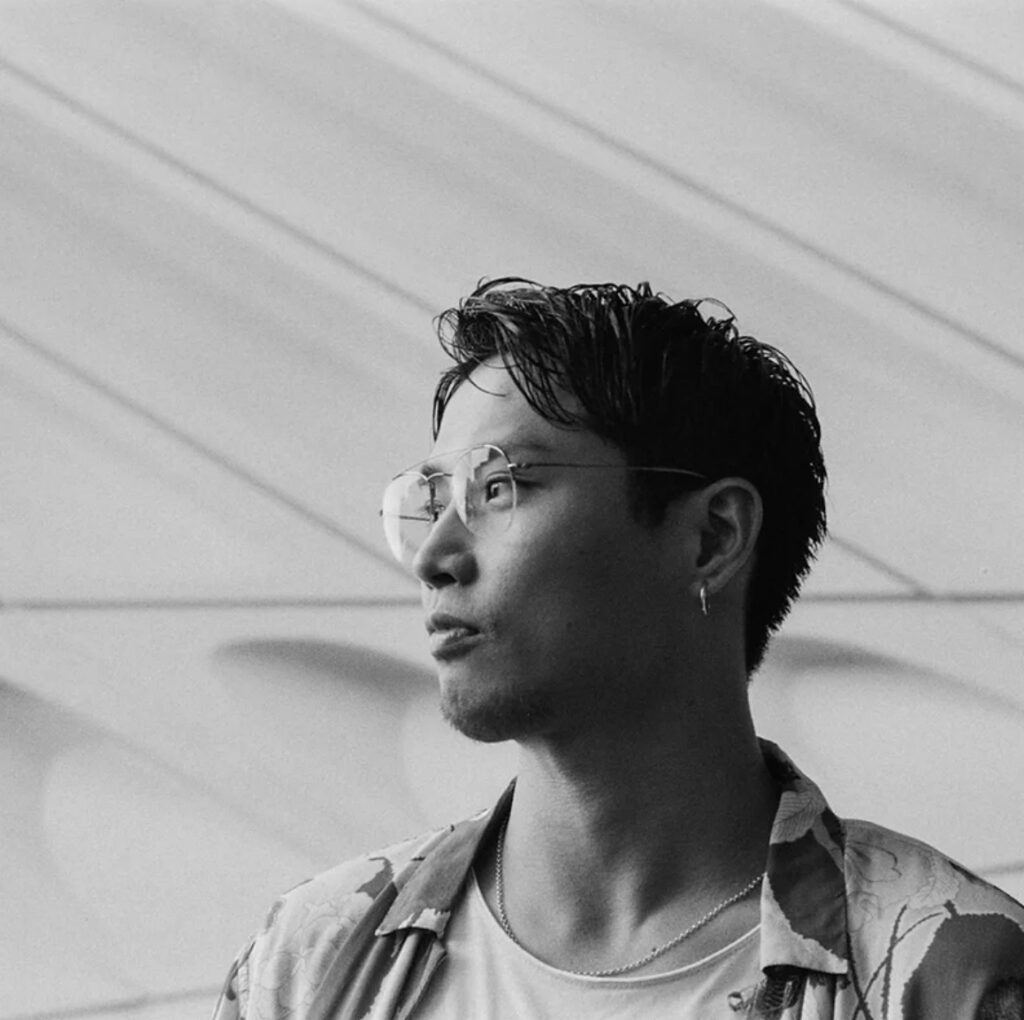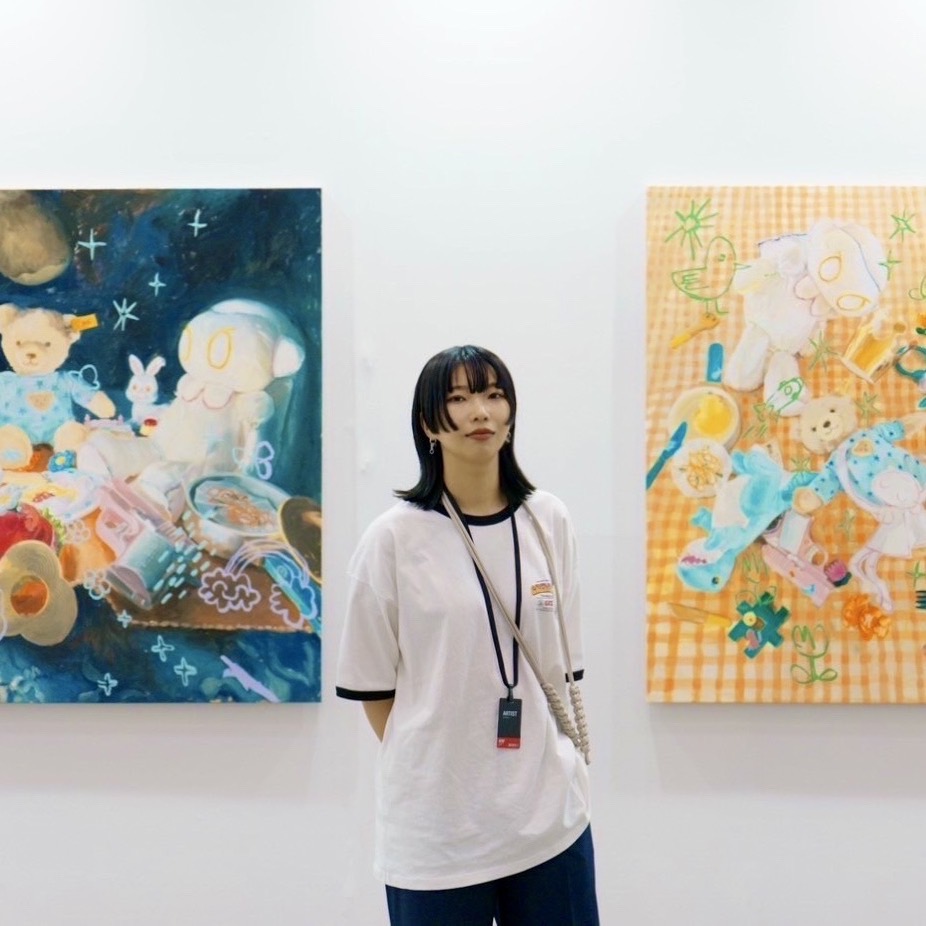EXHIBITION INFO

Group Exhibition “precision”
22nd Feb -23rd Mar OPEN: 11:00 - 18:00CLOSED ON MONDAY AND TUESDAY

CRASTY
"CRASTY" is scattered all over the city so that people living in Tokyo have seen it at least once
From 2009 to 2013, he traveled from
Tokyo to New York, gained experience in the local streets, and after returning home, he focused on Tokyo
Artists expanding their base of activities in Europe and Thailand.
HAMADARAKA (EruArizono/EmuArizono)
HAMADARAKA is a twin artist duo consisting of Eru Arizonoand Emu Arizono.
They use a variety of materials to create art with the themes of “paradise created by mixing impossible creatures and time” and “a world that exists between this world and utopia.”
In addition to solo exhibitions in Japan, the girls have participated in art projects in France, the Netherlands, New York, Beijing, Taipei, Germany, Belgium, and Brazil/Brasilia National Museum.
They have been actively exhibiting their works both domestically and internationally, including the solo exhibition "EDENDORDORADO" at DIESEL ART GALLERY, the Residency Program at Beijing Qingyun International Art Center, the production of restaurant murals in Rotterdam and Berlin, and the mural production at JIDAR STREET ART FESTIVAL in Rabat, Morocco.
They also created costumes for "Hedwig and the Angry Inch" John Cameron Mitchell's performance in Japan, and created artwork for the SUMMER SONIC Makuhari Messe venue as part of the Agency for Cultural Affairs' project "MICUSRAT," and have also provided artwork for album jackets and apparel both domestically and internationally.

KAZUSA MATSUYAMA
Fine Artist based in Tokyo, Japan
1992 Born in Tokyo, Japan
His work responds to his own bi-cultural experience of growing up between Japan and United Kingdom by bringing together aspects of both Eastern and Western aesthetic systems.
When he returned home to Japan, He began working on paintings that referenced his creative roots both in Japan culture and Western culture.
Using Japanese ink, spray paint, oil painting, acrylics and mixed media to transform traditional Japanese paintings in a contemporary style.
While including anonymity through distorted emotions and abstract depictions, a “scene” is framed to not only portray the cosmetic emotions of everyday life, but to pursue the beauty hidden in the essence.
He is influenced by a variety of subjects, including Japanese art from Edo and Meiji eras, French Renaissance painting, post-war contemporary art, and the visual language of global, popular culture as embodied by mass-produced commodities.
KAZUSA MATSUYAMA has focused on the viewer regarding the ‘relationship between the artwork and the viewer’ as the source where pluralistic meanings are created from the illustrated narratives of the works, and thus, as the essence of his pictorial expression. The scenes he composes are of ordinary situations in daily life, but simultaneously dreamlike and fantastical too — and in these scenes are people who appear somewhat vacant, or perhaps utterly captivated by reverie, as their facial expressions illustrate.
The meticulously designed composition, the colors, the motions in the brushstroke, and a sense of déjà vu and nostalgia, accompanied by a distinct uncanniness, a strange ambience — in the artist’s works, all of these aspects are seamlessly harmonized, therefore giving birth to a new world.
Seeking to preserve the universal beauty found in the foundation—the essence—of human nature in the form of artworks, without being influenced by the apparent propensity of a particular time: this is KAZUSA MATSUYAMA, the artist living in the present times.
In today’s society where diversity has become overly complicated, and change, all the more intense, there is no doubt that the actions and artworks of KAZUSA MATSUYAMA, who continue to illustrate the sensations, emotions, and memories inherent in human nature within the context of the ‘relationship between the artwork and the viewer,’ will become the essence and symbol of the time for the future generations and prevail as the essence of ‘universal beauty.’

KOHEI ARANO
Born in Tokyo.
Influenced by street culture and movies, he creates art based on life-sized images rooted in everyday life. It incorporates various pictorial elements such as blank spaces and tagging.
When the world changed from VHS to DVD, he was influenced by 90's movies by Gus Van Sant, Terry Gilliam, Jim Jarmusch, etc., which he found in the rental VHS he bought at wagon sales.His paintings have a story-like quality, similar to storyboards for movies and anime, and are projected as if there were scenes before and after them.He depicts universal everyday life like a scene from a movie, and incorporates the act of cutting out memories like a manga or storyboard.
The glue, washi paper, gofun, and pigments that he uses are classical Japanese painting techniques, and are traditional painting expressions that have been passed down in Japan since ancient times.
Using the uniqueness of Japanese painting materials, he mixes motifs that incorporate influences from movies and street culture, creating works that combine Japanese painting techniques and the street.

MAHO TAKAHASHI
Born in Chiba Prefecture in 1992
The characters that appear in Maho Takahashi's works are symbolic representations of contemporary girl figures.
People who were born after the 1980s have grown up in an internet-centric environment, and they belong to the digital native generation where anime, manga, and games are familiar and have a significant influence on them. In Takahashi Maho's familiar content, the characters portrayed as unmistakable heroes and heroines, becoming the objects of our admiration, while also being depicted as strong and beautiful.
Her depiction of girl characters, however, deviates from the typical appearance seen in what's known as otaku culture in Japan. Instead, she embraces a more simplistic and unadorned look. This could be attributed to her background in design, but it also seems to stem from a nostalgic attachment to her childhood.
The foundation of Takahashi Maho’s work is rooted in the past experiences and memories that shaped her during childhood. The girl character "Ano Ko" appearing in her works serves as a visualization of the formative years when significant personalities are developed. Personality, influenced by the interplay of genetics and the environment, is believed to be shaped through changes and development, excluding external factors such as accidents or illnesses. Children, being innocent, are delicate and intricate beings due to their innocence.She likens it to a chrysalis before metamorphosis.
All these memories and experiences form crucial pillars of growth and support for a person. Now, as adults, within the absurdities of society, the presence of 'Ano Ko' becomes a sanctuary for self-preservation, while her unique appearance, distinct from the conventional heroine, also symbolizes diversity.
Her works primarily use "haku," a traditional Japanese technique involving gold leaf, which represents an illustrious and enduring idol from the past.
Gold used since around 3,000 BC, has enthralled people's hearts as a metaphor for timeless value. Childhood memories and experiences hold a lasting significance, connecting to the present. She conveys these memories and experiences through the symbolism of gold. While evoking nostalgia, she uses it as a tool for contemporary expression.
In recent years, the issue of diversity has come to the forefront, and we, too, are active participants in the modern world. Changing what has been etched into our DNA throughout history in just a few short years is a challenging task, but Takahashi believes that progress can be made, even one step at a time.
She hopes for a future where we can acknowledge and embrace one another.
Each time we embrace our younger selves, she believes peace comes closer.
The modern girl figures she creates symbolize a yearning for peace and equality that emerges from a rich era.

